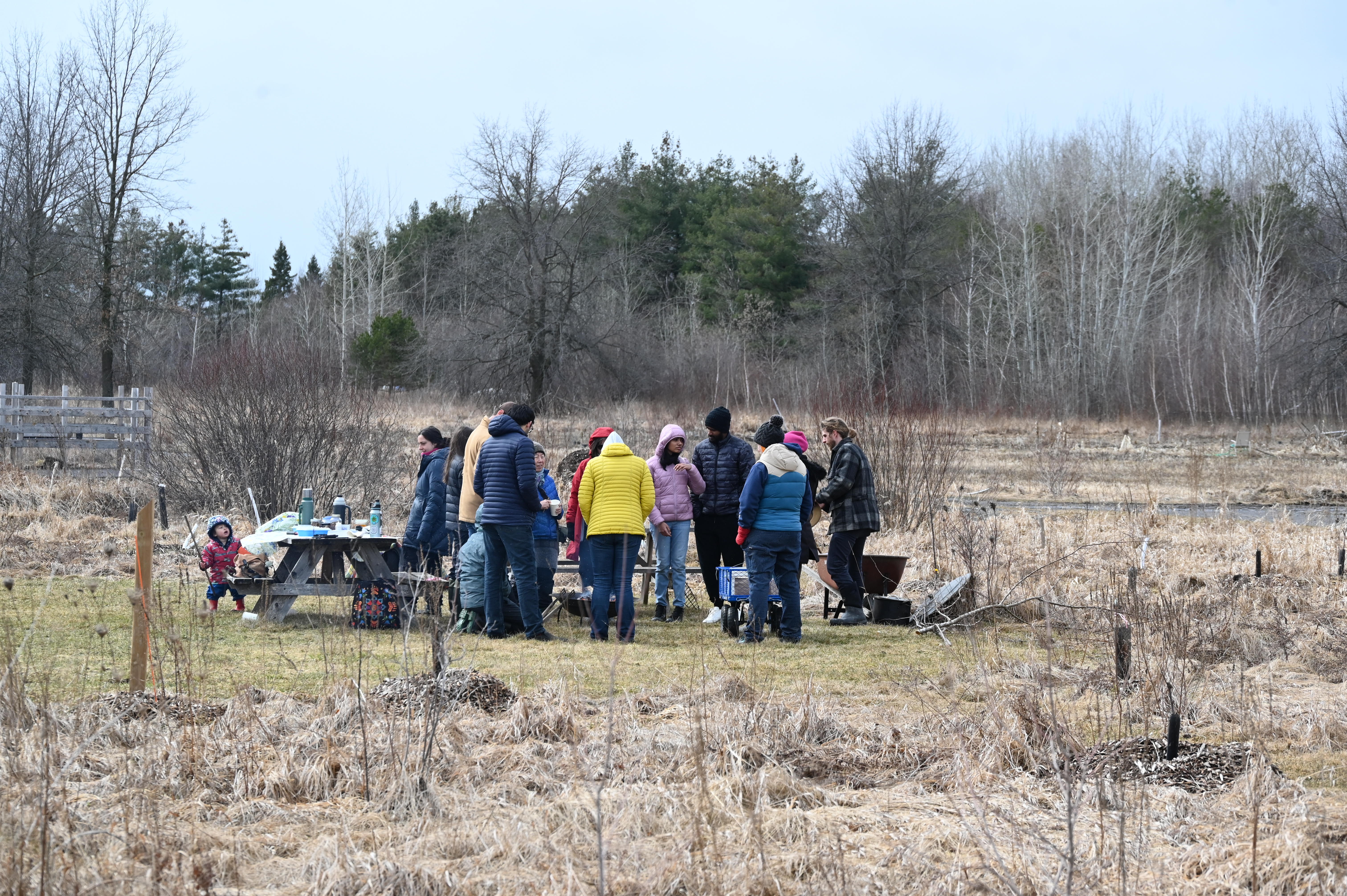We had a lovely and lively time during the late-winter pruning workshop this past weekend. Late-winter pruning of food-bearing trees and shrubs offers the opportunity to see the shape of the tree without its structure being hidden behind a mass of leaves. At this time of year, it is expected that trees are dormant, and when dormant, they respond differently than they would if they were pruned in mid-summer.
One of the most important aspects of pruning is to develop our observational skills. The first part of this workshop involved identifying different parts of the tree, in a fun team-based adventure. All the participants did very well in finding things like the central leader, leaf nodes, fruiting spurs, water sprouts, damaged limbs, scaffold and lateral branches, and so forth. With a common set of terminology, we braced the day’s challenging weather and proceeded with some helpful mnemonics, which are ways of remembering what we should prioritize when undertaking winter pruning activities. We took the time to remember that the priority can be placed on the health of the tree.

When we think about the tree as a friend that we want to help be as healthy as it can be, our pruning activities are very clear. We prioritized the 3 D’s, looking for dead, diseased, or damaged limbs that will be prioritized on the pruning list so that we assist the tree to help limit the spread of disease. We think about what we can do to ensure the tree heals fast, keeping tools sharp and disinfected, making clean cuts, and avoiding damaging collars so the tree can heal very quickly. We stay true to the 25% or less rule, where we limit how much of the body of a tree to prune in any given year, so it has the energy to recover. We make multi-year pruning plans for overgrown trees, rather than taking too much at once.
We think about the optimal shape of the tree, which shape it naturally tends toward, given its environment, which shape allows it to be most balanced, receive good sunlight to its parts, and have great airflow. We think about its scaffold branches as a ‘spiral staircase’, which gives it strong structure and sun, and airflow. We do not throw cats through trees, but we picture how they might jump through the limbs on their own accord.
We ended the session as you would hope, getting some hands-on practice, taking the theory and applying this new winter pruning knowledge to ‘phase 1’ of pruning some nearly-wild crabapple trees.
The essence of the day can be summed in this little blurb from a previous year’s workshop:
The checklist that we used during the session to help identify the various parts of the tree can be found on our resources page and shared below for convenience. If there are some takeaways from the time we spent together, let it be that we want to give more than we take. We want to treat these trees as treasured friends and family. They offer us so much beauty, nourishment, and peace, that we offer back our care and assistance in thanks and gratitude.


One thought on “March 2024 Pruning Workshop Review”